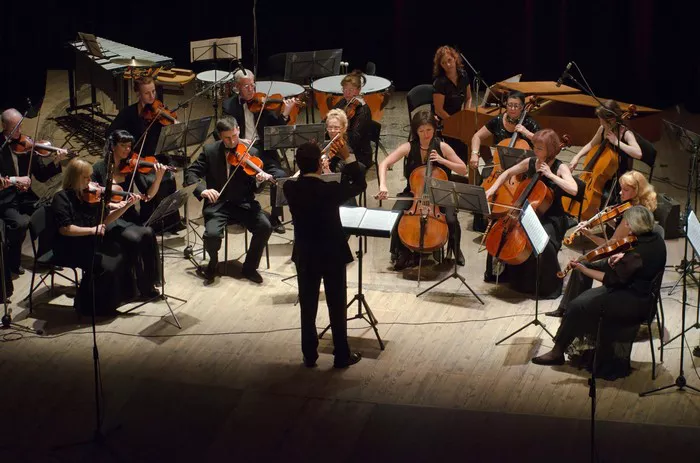Classical music enthusiasts and novices alike have been captivated by the timeless beauty of Ludwig van Beethoven’s Piano Sonata No. 14. Commonly known as the “Moonlight Sonata,” this composition is a pinnacle of classical music. In this article, we will delve deep into the world of classical music and explore the nuances of this iconic sonata, its historical context, musical characteristics, and its enduring impact on the world of music.
I. The Moonlight Sonata: A Glimpse into Beethoven’s Genius
Ludwig van Beethoven, a towering figure in the world of classical music, composed his Piano Sonata No. 14 in C-sharp minor, Op. 27, No. 2, in 1801. This composition, with its ethereal and melancholic quality, has earned the nickname “Moonlight Sonata” due to the poetic and evocative nature of its music. Beethoven’s mastery of classical music is unmistakable in this work, as he transcends the boundaries of his era to create a piece that resonates with audiences even today.
II. Historical Context of the Moonlight Sonata
To truly understand the significance of Beethoven’s Piano Sonata No. 14, one must appreciate the historical backdrop against which it was created. The early 19th century was a transformative period for classical music. Beethoven, a central figure of this era, was experiencing profound changes in his life. He composed the “Moonlight Sonata” during a time of personal turmoil, which is reflected in the emotional depth of the piece. This was also a period when the classical style was evolving into the romantic, and Beethoven’s sonata played a pivotal role in this transition.
III. The Three Movements of the Moonlight Sonata
A hallmark of classical music is its structural complexity, and Beethoven’s “Moonlight Sonata” is no exception. The composition consists of three distinct movements, each with its own character and musical narrative.
A. Adagio sostenuto: A Poetic Prelude
The first movement, marked “Adagio sostenuto,” immediately sets the tone for the entire sonata. This slow and contemplative introduction is a testament to Beethoven’s ability to evoke emotions through music. The melancholic melody, accompanied by flowing arpeggios, transports the listener to a world of introspection and beauty. The movement’s tranquility and grace have made it an iconic piece in the realm of classical music.
B. Allegretto: A Ray of Hope
The second movement, marked “Allegretto,” is a stark contrast to the somber opening. It is more lively and rhythmic, providing a sense of relief and hope. Beethoven’s inventive use of syncopation and shifting dynamics keeps the listener engaged and illustrates his mastery of classical composition techniques. This movement serves as a testament to Beethoven’s ability to balance the emotions within the classical music framework.
C. Presto agitato: A Tempestuous Finale
The final movement, marked “Presto agitato,” returns to the introspective and passionate realm of the first movement. It is a whirlwind of emotions, a tempestuous journey through the depths of Beethoven’s soul. The virtuosic demands of this movement showcase Beethoven’s ability to push the boundaries of classical music, taking it to new heights of expressiveness and technical prowess.
IV. The Moonlight Sonata’s Enduring Influence on Classical Music
The “Moonlight Sonata” not only stands as an exceptional piece of classical music but also holds a unique place in the broader history of music. Its influence can be seen in the works of countless composers who followed Beethoven, drawing inspiration from his innovative use of harmony, form, and emotional depth. Even in the modern era, this sonata continues to be a source of inspiration for musicians and a staple of classical music repertoire.
V. Interpretations and Performances
One of the remarkable aspects of classical music is the room it allows for interpretation. The “Moonlight Sonata” has been performed by countless pianists over the years, each bringing their own perspective to the piece. From the romantic interpretations of Artur Schnabel to the more historically informed performances of period instrument specialists like Ronald Brautigam, this sonata offers a canvas for artists to express their unique interpretations while staying true to Beethoven’s vision.
VI. Technical Challenges and Artistic Expression
In the world of classical music, performing Beethoven’s “Moonlight Sonata” is a formidable task that requires a delicate balance between technical prowess and artistic expression. Pianists must master the intricate passages and dynamic contrasts while conveying the profound emotions embedded in the composition. It is in the execution of these technical challenges that the true brilliance of classical musicians is revealed.
VII. The Moonlight Sonata in Popular Culture
Beyond the classical music world, the “Moonlight Sonata” has left an indelible mark on popular culture. Its haunting melody has been featured in countless films, television shows, and advertisements, further cementing its place in the public consciousness. The enduring popularity of this sonata demonstrates how classical music can transcend the boundaries of time and reach a diverse audience.
VIII. The Legacy of Beethoven’s Moonlight Sonata
The “Moonlight Sonata” remains a testament to the enduring power of classical music. Beethoven’s ability to convey profound emotions through intricate compositions has left an indelible mark on the world of music. It is a work that continues to captivate audiences, transcending the confines of classical music and resonating with people from all walks of life.
IX. Conclusion
Ludwig van Beethoven’s Piano Sonata No. 14, the “Moonlight Sonata,” is a treasure of classical music. It stands as a testament to Beethoven’s genius and his ability to express the depths of human emotion through the language of music. With its historical significance, intricate structure, and enduring influence on classical music, the “Moonlight Sonata” is a masterpiece that will continue to shine brightly in the world of music for generations to come. Beethoven’s contribution to classical music through this sonata is a reminder of the timeless beauty and emotional resonance that this genre offers to all who seek its enchanting embrace.

